
9 Feb, 2015
Cambodia’s two World Heritage temples symbolise future of peace, culture and tourism
SIEM REAP, Cambodia — The World Heritage Site of Angkor Wat was the backdrop of the first world UNWTO-UNESCO ministerial conference on building a tourism-and-culture partnership between February 4-6, 2015. More than 900 delegates from 100 countries, including record numbers from the Arab world and Africa, mulled ways to save the tourism goose from dying of exhaustion as a result of insatiable demand for its golden eggs. Ministers heard lofty words about peace and friendship, the borderless beauty of a shared planet, heritage spots belonging to all mankind and more.
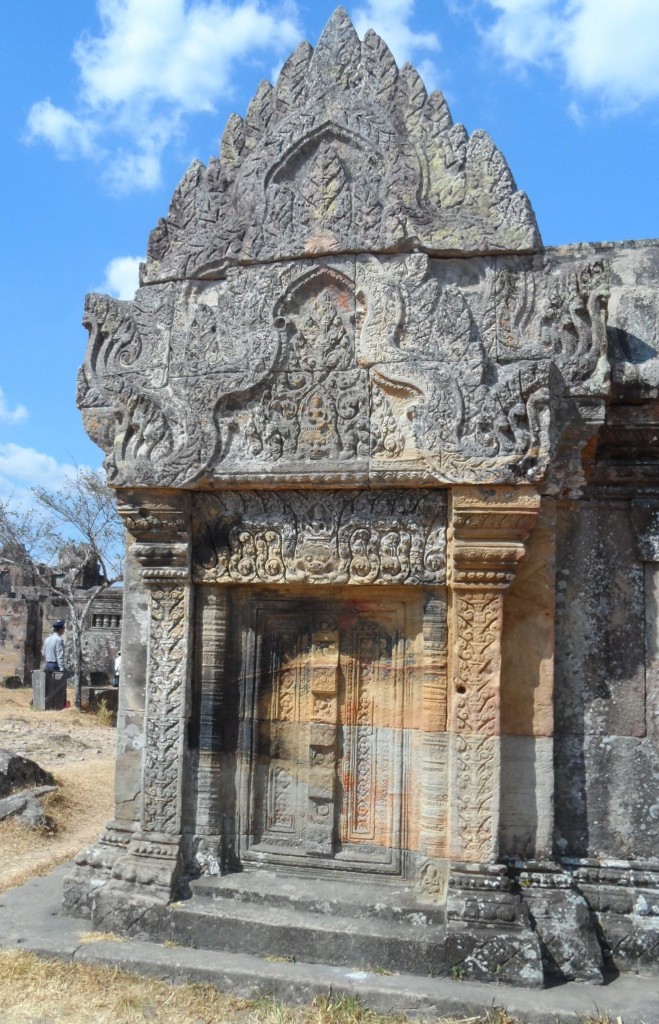 The UNESCO World Heritage Site of Phra Vihear, Cambodia |
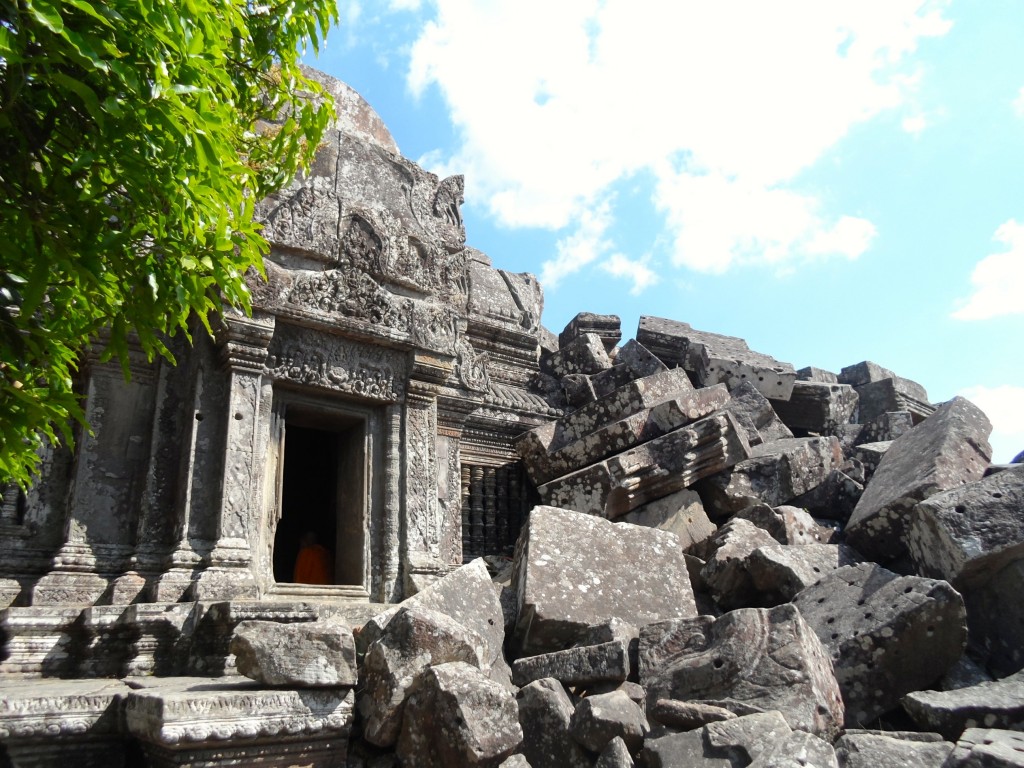 The extensive level of ruins, thanks to years of political disputes |
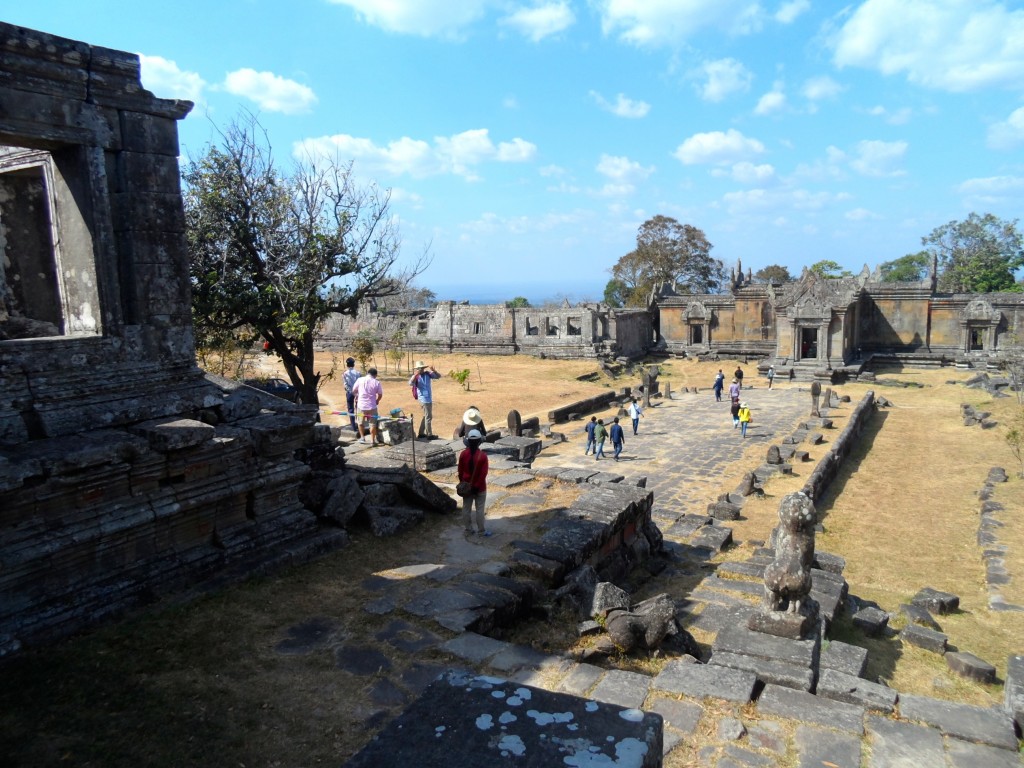 The design and architecture of Phra Vihear is similar to that of Cambodia’s other World Heritage Site, the famed Angkor Wat. (See more pictures below) |
All that philosophical hyperbole hit a reality check on the day after the conference ended when about 100 delegates sat through a 250-kilometre, four-hour drive to visit the second of Cambodia’s two tangible UNESCO World Heritage sites – the temple of Phra Vihear, located just 800 metres on the Cambodian side of the border with Thailand. In stark contrast to the hustle-bustle around Angkor Wat, the hinterland of Phra Vihear is quiet. A military presence is more prominent than a tourism presence. Uniformed soldiers armed with menacing machine-guns guard the hilltop site. A Cambodian flag flutters high in the wind.
Both are great temples devoted to Hindu gods, World Heritage Sites located in a Buddhist kingdom and architecturally almost identical. Why then the disparity in tourism visits?
Answer: The prevalence of permanent peace at one, and only a tentative peace at the other.
For years, Phra Vihear was at the centre of a border dispute between Thailand and Cambodia. In two decisions, the International Court of Justice has ruled that the entire area and its adjacent areas belong to Cambodia. In spite of that, stability has not returned. Visitors to the temple are negligible. The political stand-off, which at one stage escalated to fullscale military confrontation, is too complex to be explored in detail here. Plenty of background is available on the Internet. But its bottom-line impact is undeniable: Both sides lose, and ordinary people lose most of all.
On the Thai side, the dispute obstructs the strategy to more effectively position Thailand as a gateway to the Mekong Region. Thailand’s expanding transportation linkages with neighbouring Laos, Myanmar and Cambodia are a major conduit for cross-border traffic, intra-regional traffic and international visitor arrivals. The crossing with Phra Vihear is potentially one of the most important because it straddles a World Heritage site, declared in July 2008 (see maps and locations below). A free two-way flow of visitors would do for the Thai border province of Si Saket what the four Friendship bridges across the Mekong river are doing for the many other provinces on the Thai-Laotian border. In fact, no new bridges would be necessary. Si Saket already has an A-grade road network.
On the Cambodian side, it is a similar story. Of the many Cambodian border checkpoints with Vietnam, Laos and Thailand, only one straddles a UNESCO heritage site. Like other ASEAN countries, Cambodia is trying to diversify its destinations, and relieve pressure on Angkor Wat. The country’s tourism master plan calls for four development zones. The Culture and Nature Zone covers only Siem Reap (see map below). If Phra Vihear is included, the size of that entire zone almost doubles. Indeed, Phra Vihear would be just as popular as Angkor Wat. The view from its hilltop location, especially sunset and sunrise, is just breath-taking. However, for many potential tourists, the long drive from Siem Reap to Phra Vihear is not felt to be worth it, especially as there many other more easily accessible temples elsewhere in Cambodia.
So what’s preventing these commonalities, policies and strategies from bearing fruit? The same old parochialisms – nationalistic jingoism and emotional bunfights over tiny plots of real estate that make no sense in a broader national and regional context.
Indeed, Cambodia becomes a major global example of how peace lies at the heart of all forms of tourism development. The prosperity-vs-poverty gap at the two temples located in one country is a learning curve par excellence. It proves that the key to unlocking the region’s growth potential is to settle old political disputes and prevent the emergence of new ones. That is true of the entire GMS region and all other flashpoints in Asia.
The UNWTO-UNESCO conference was all about tourism, culture and partnerships, positioned as the first such joint gathering of ministers. It resounded with clarion calls for action.
Said UNWTO Secretary-General Mr. Taleb Rifai, “One billion tourists can be one billion opportunities or one billion disasters. As much as we welcome tourism’s growth and its benefits, we should never forget that such growth comes with increased responsibility. Responsibility to protect our heritage, responsibility to promote our common values and responsibility to work together. Indeed, partnership is the fundamental message at the heart of this conference. We need to bridge the gap that, despite encouraging efforts, still exists between tourism and culture. We need to explore new government models and innovative initiatives where the best of the two worlds come together to the benefit of all.”
Said Cambodian Prime Minister Hun Sen, “Tourism sector is not only a socio-economic sector that helps sustain growth, create jobs and reduce poverty, but is also considered an important sector that supports regional integration…. Tourism and culture must be united to promote competitive advantage of tourism attractions and the culture of peace. The development of culture tourism will help strengthen the relations between tourists and local people, promote mutual understanding, enhance friendship and solidarity and raise the price as well as cultural identity of local communities..” He called for tourism to become “a dynamic force of peace, cooperation, friendship, solidarity and mutual understandings of the peoples of the world.”
Mr. Alfredo Perez de Arminan, UNESCO’s Assistant Director-General for Culture, said, “Sustainable development cannot be crafted solely though economic and political strategies – it must be built upon sustainable and inclusive societies. Culture standards at the heart of this vision, as a force for dialogue, social cohesion, creativity, dignity and participation. This is the vision we are bringing to the process of shaping the post-2015 sustainable development agenda. And we all can play a crucial role here, to help others understand the power of culture, both as an economic driver that provides jobs and economic growth, as well as an enabler of sustainability, fostering dialogue and identity, and individual spiritual fulfillment.”
The formal conference presentations all lauded the link between tourism and culture but only confirmed what is already well-known. A primary issue was managing the congestion. Mr. de Arminan admitted that being anointed with World Heritage Status can be a double-edged sword as fame leads to a visitor rush. Siem Reap, declared a World Heritage Site in 1992, is a classic example. An entire new city has grown up around Angkor Wat, creating thousands of direct and indirect jobs. Like many parts of Asia, this has spawned a whole new set of problems, covering both the management of tourism for temporary visitors and urbanisation for the permanent local residents. It is a study in contrasts. For the temporary visitors, great hotels and museums reflect the best of Khmer creativity, culture and arts. For the locals, it means living with noise, pollution, traffic and garbage.
The focus on partnerships also lent itself to a wider definition – partnerships with whom? Although tourism is seen mainly as a partnership between economic policy makers, the transport sector, immigration authorities and cultural sector, the tale of the two Hindu temples indicates the fate of the tourism goose lies more in the hands of the defence, national security and foreign policy sectors. Presently, these partnerships are non-existent.
Again, Cambodia itself is a first-rate example. Having suffered one of Asia’s worst genocides in the 1970s, it is now working to ensure that it never happens again. King Simeon II, former Prime Minister of Bulgaria, talked about having experienced the horrors of World War II as a child. Ruing the prevalence of many mini-conflicts worldwide, he said, “All of us must work to increase the number of fortunate countries, those which can subsist without fear of conflict.”
Prince Sultan bin Salman, President and Chairman of the Board of the Saudi Commission for Tourism and Antiquities, son of the present Saudi king and the only Arab and the only tourism industry personality to have seen Planet Earth from outer space, noted that from that vantage point, there are no countries and no borders, just one Planet, meant for all of humanity.
That does not hold true on the ground, however. In fact, border disputes such as Phra Vihear and their wider socio-economic impact fly in the face of all the hyperbolic vision statements and official goals.
At the regional level, both Thailand and Cambodia are members of ASEAN which is striving to create an integrated economic, socio-cultural and political-security community this year. The rallying-cry slogan is to create “One Vision, One Identity, One Community” via a borderless region and seamless travel. With a border-crossing right on its doorstep, Phra Vihear could be a very important destination on the ASEAN travel circuit. A comprehensive opening-up would be 100% in line with those vision statements. But it has not happened — yet.
Global business and political leaders claim to be responsible custodians of this world, holding it in trust for the next generation. That claim also runs afoul of reality. A number of next generation youngsters were at the conference. One Korean lady, 26, had backpacked through more than 20 countries in Asia, Europe and Latin America and was heading back home to save up for her next trip. Another Indonesian young lady was studying in the University of Birmingham. Another four young people from Malaysia, Myanmar and Nepal were doing their Masters in Public Policy at the National University of Singapore. All said they had found the conference interesting but a little too much top-down oriented. They all enjoyed meeting new people but found little “new” beyond what they already knew.
At an even higher level, temples serve a holistic purpose, as abodes of peace and enlightenment. When they were built centuries ago, the construction process would certainly have created a lot of jobs and economic activity. But that was not their purpose. They were built as places of worship, with awe-inspiring design and architecture designed to help people attain a higher level of spirituality. All the software rituals, arts, music and literature which emerged around the hardware is today known as “culture.” Faith and worship forged the real community and identity. Economic activity was only an adjunct. Today, the reverse is true. Faith, culture and worship are seen as having practical value only as long as they can lay golden eggs for the tourism industry.
That alone is a sad reflection of the state of the world and its downhill drift in an era of unbridled materialism and “globalisation”.
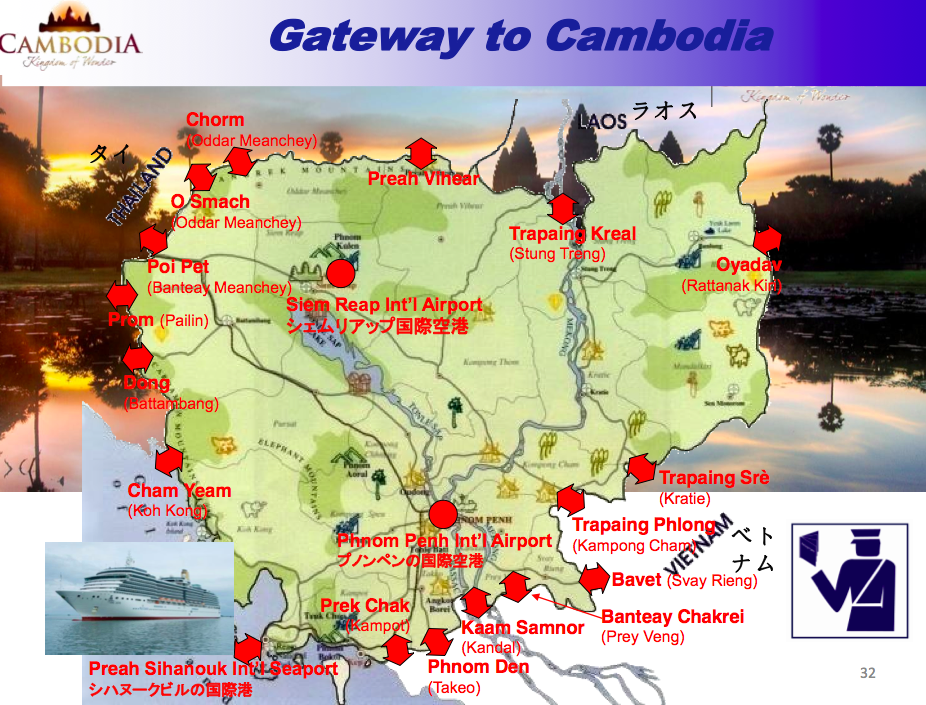 The Phra Vihear border crossing is right at the top of this map. |
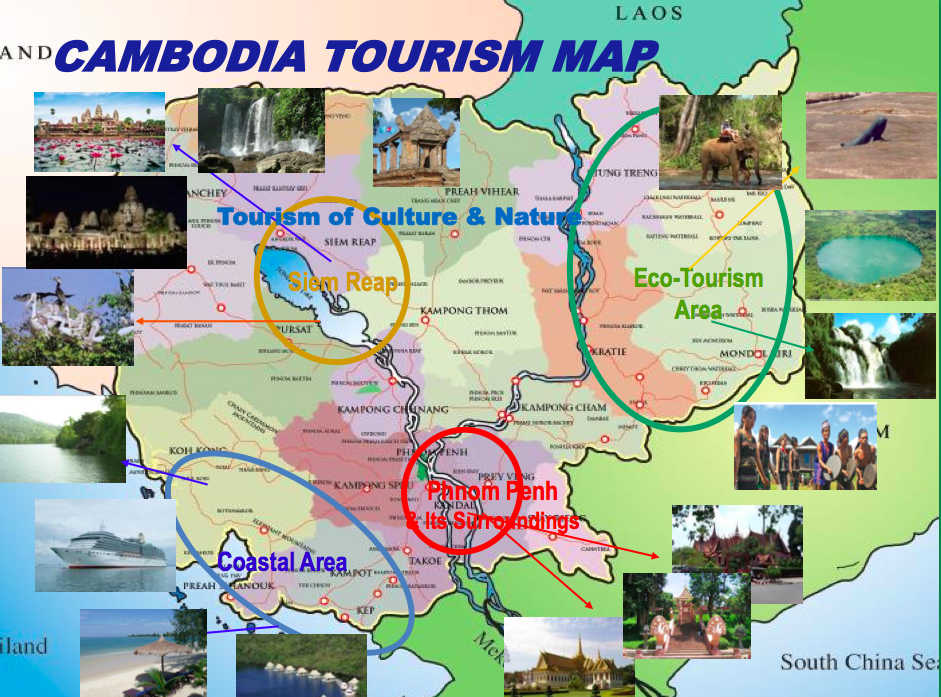 Inclusion of Phra Vihear to the right of Siem Reap would enable a major expansion of the entire “Culture & Nature” zone. |
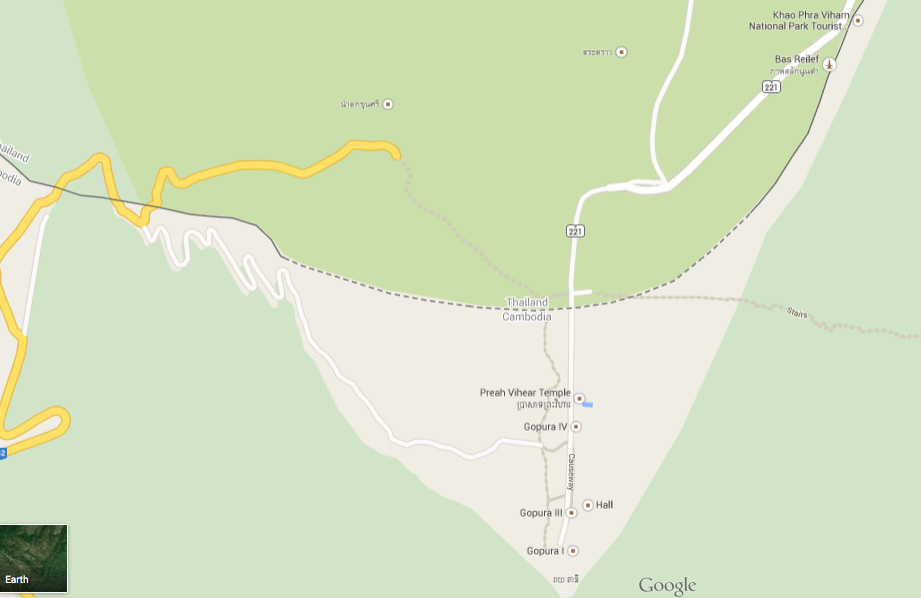 A Google map showing the exact location of Phra Vihear in relation to the Thai-Cambodian border. |
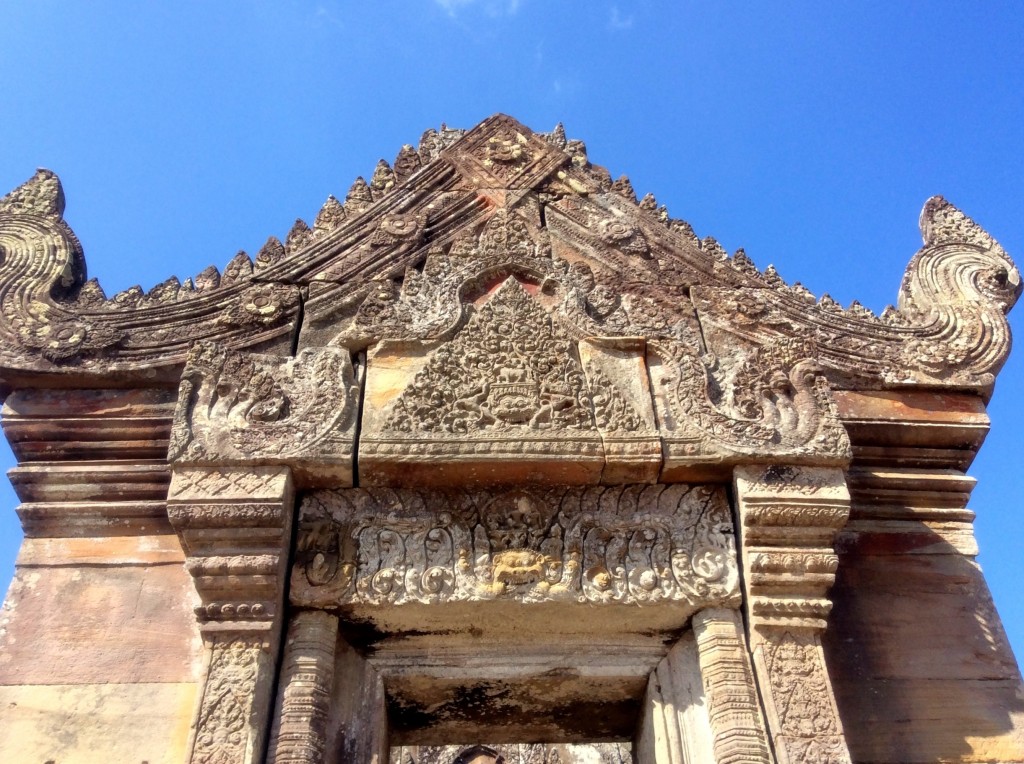 The intricate design of Phra Vihear, almost identical in style to Angkor Wat. |
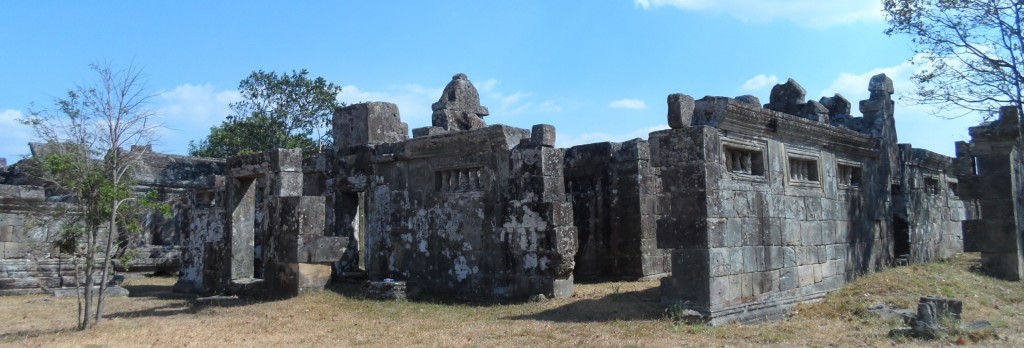 Extensive ruins everywhere. |
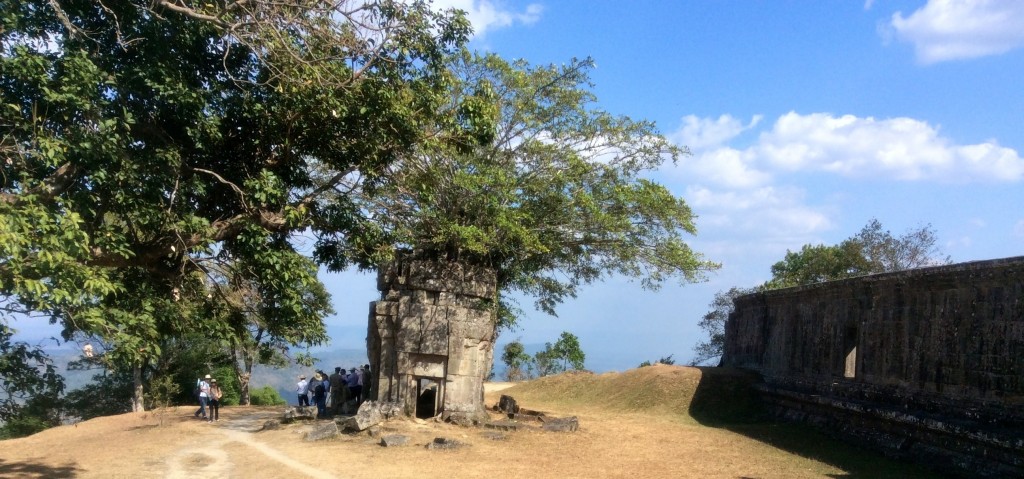 An amazing sight — a tree growing right out of one of the temple posts. |
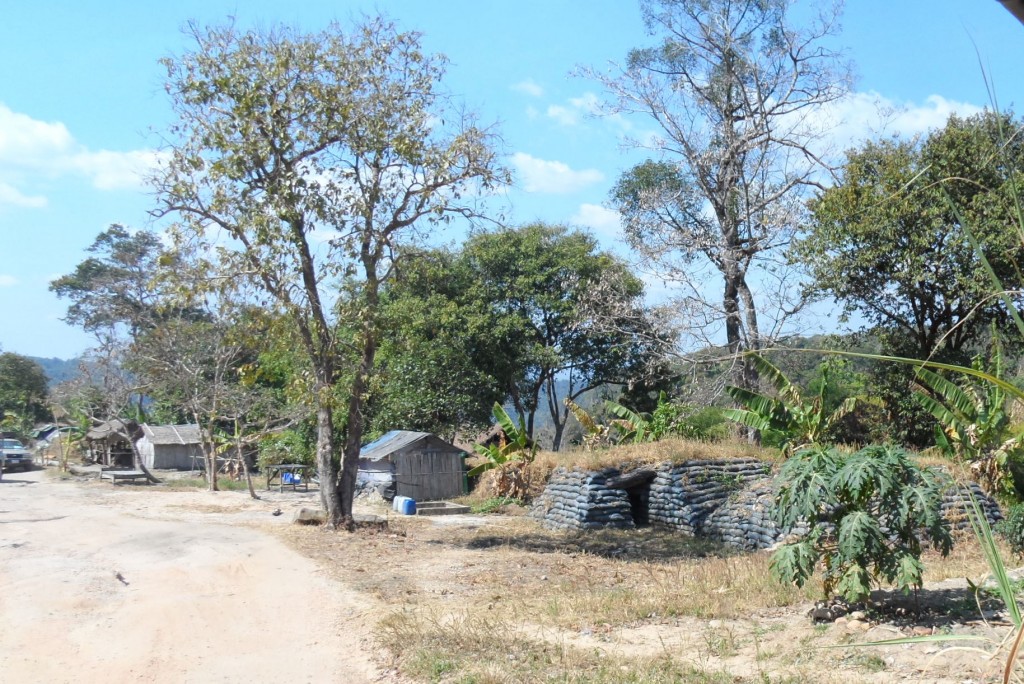 Military bunkers are still present. |
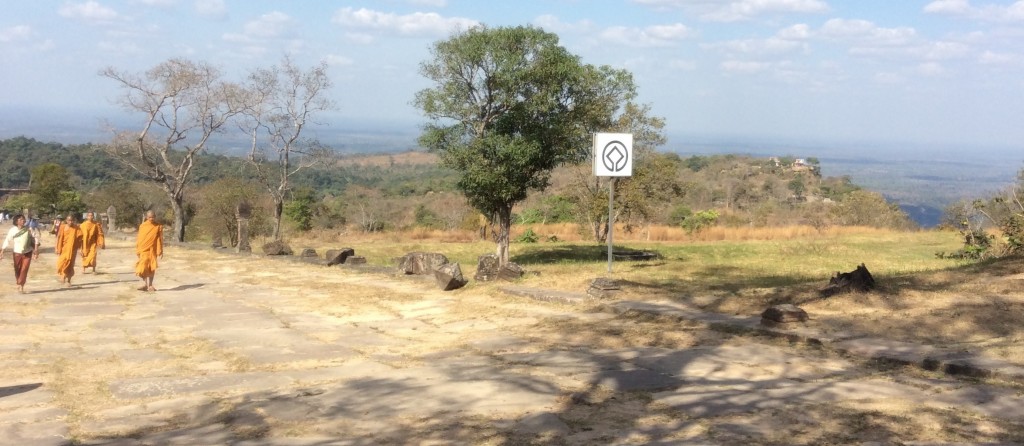 The Thai border checkpoint can be seen in the distance to the right. |
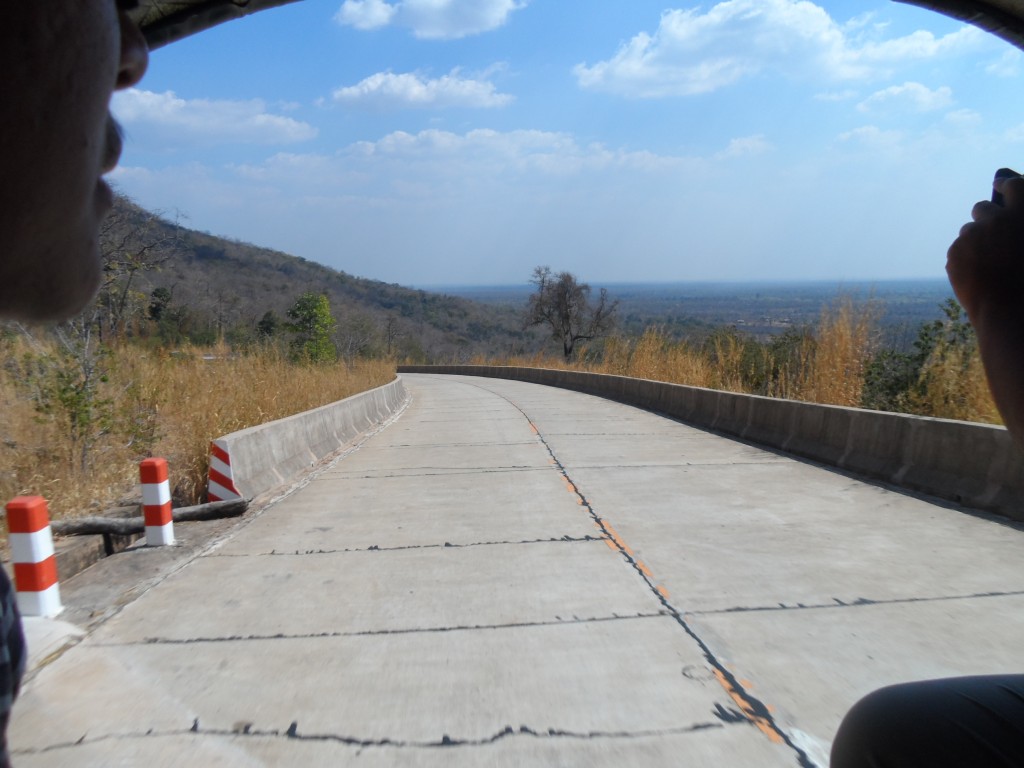 The solid concrete road leading up to Phra Vihear. |
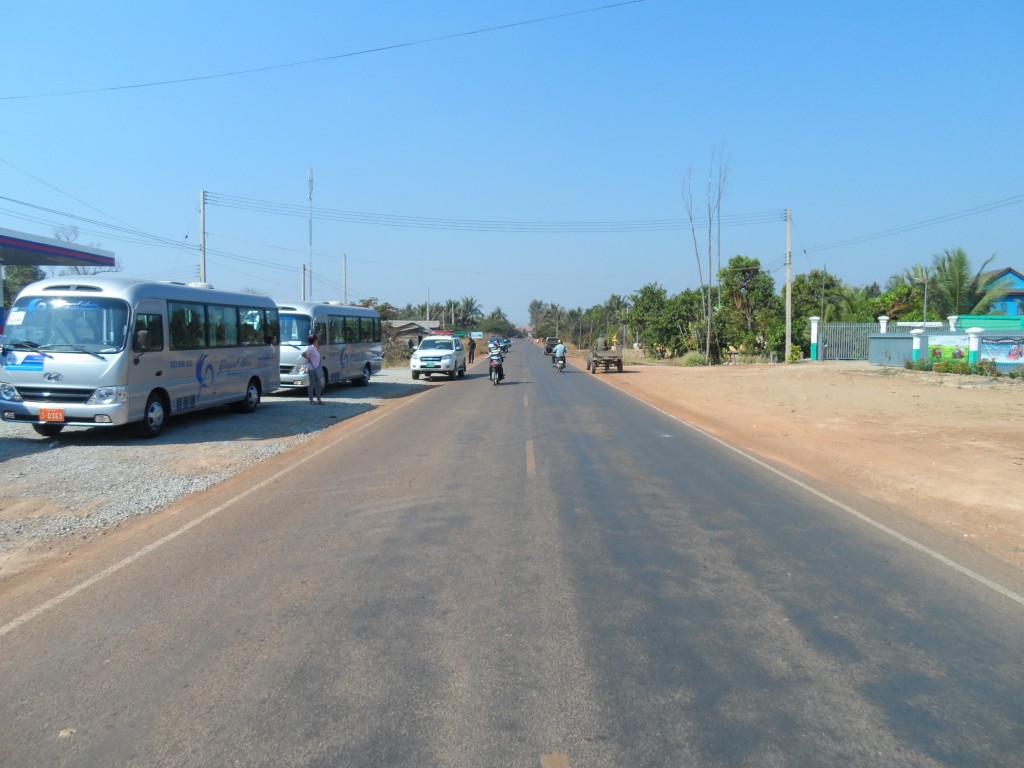 The highway from Siem Reap to Phra Vihear. The quality of the road is about the same all the way. |
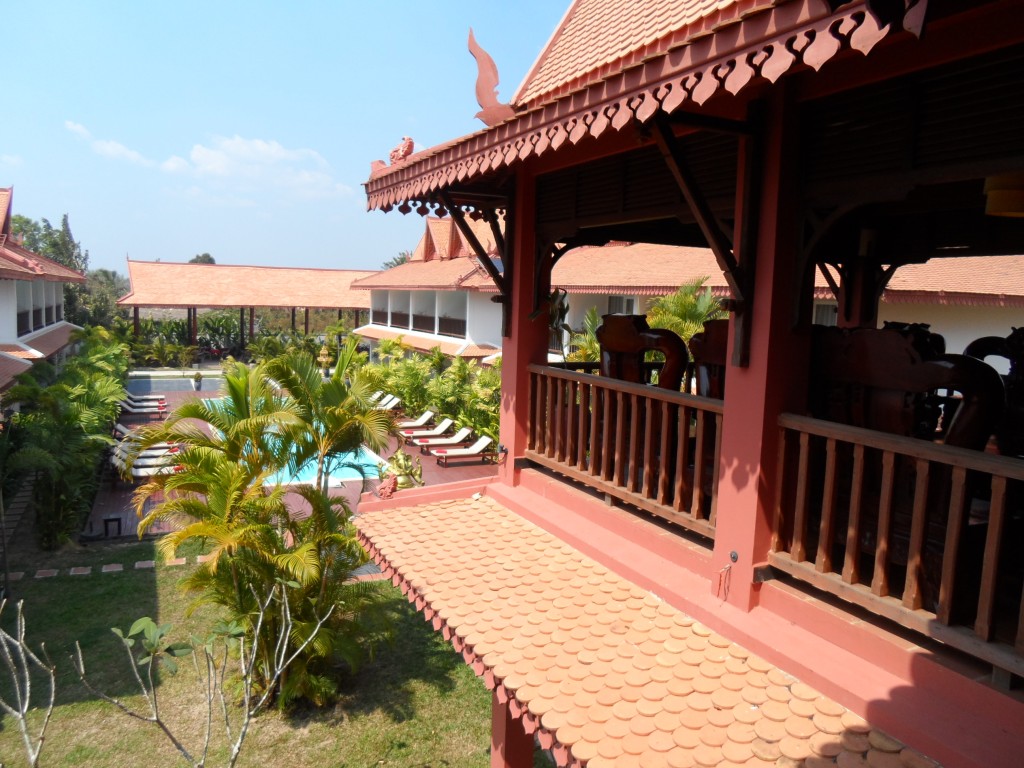 This lovely little boutique hotel located at the foothill of Phra Vihear hosted UNWTO-UNESCO conference to a lunch. |
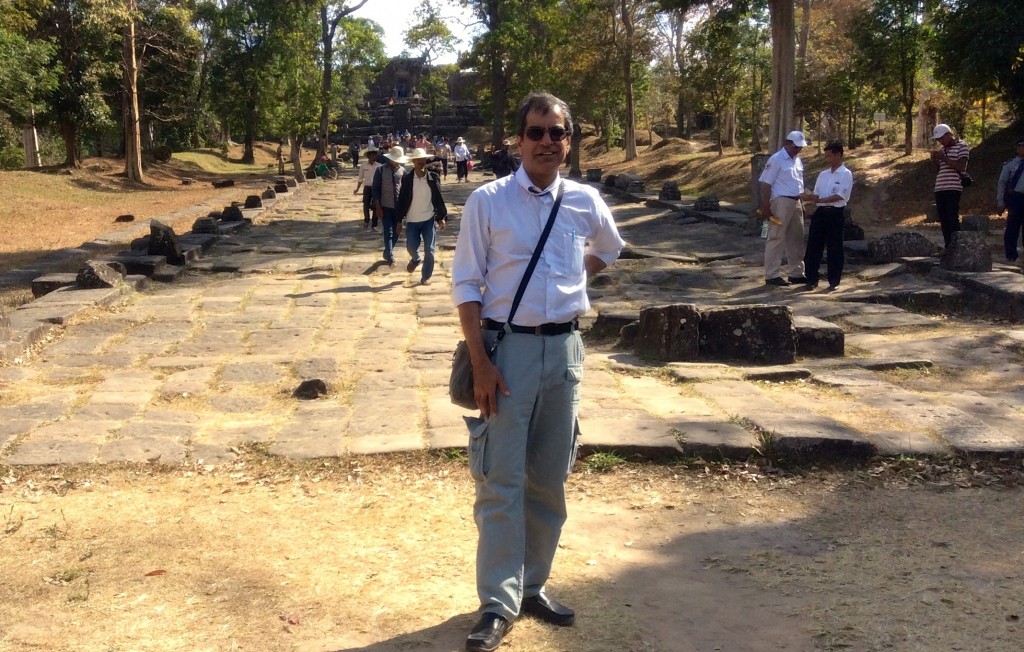 My spiritual journey continues through the holy spots of Asia. |



Liked this article? Share it!